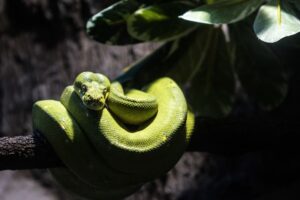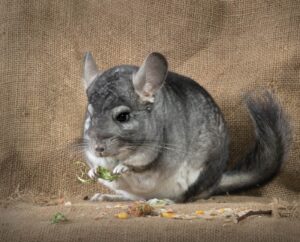Table of Contents
ToggleIntroduction
Brown chinchillas, with their luxurious fur and charming personalities, have become increasingly popular as pets in recent years. Native to the Andes Mountains in South America, these small rodents belong to the chinchillidae family and are closely related to the chinchilla lanigera, the more commonly known variety. Brown Chinchilla: We’ll delve into the fascinating world of brown chinchillas, covering everything from their physical characteristics and natural habitat to their care requirements, behavior, and tips for building a strong bond with these delightful companions.
Actual Features
Chinchilla brevicaudata, the scientific name for brown chinchillas, is distinguished by its huge ears, bushy tails, and silky, dense hair. Their fur color can vary from a light tan to a rich, dark brown, and they may have a slightly lighter underbelly. The fur is so dense that it can be challenging to see the skin beneath it, contributing to the overall plush appearance of these adorable creatures. The fur also helps them regulate their body temperature, making them well-adapted to the cooler temperatures of their native Andean habitat.
Natural Habitat
Brown chinchillas are native to the Andes Mountains in South America, particularly in the countries of Peru, Chile, and Bolivia. They inhabit rocky areas and crevices, where their excellent jumping and climbing abilities come in handy. The chinchillas’ thick fur coats are a reflection of the lower temperatures seen in their high-altitude habitat. In the wild, brown chinchillas are herbivores, feeding on grasses, seeds, and other vegetation.
Choosing A Brown Chinchilla
Selecting a healthy and well-mannered individual is crucial when thinking about getting a brown chinchilla as a pet. Look for clear, bright eyes, a clean and glossy coat, and a lively, curious demeanor. Avoid chinchillas that show signs of lethargy, discharge from the eyes or nose, or any other signs of illness. Also, check for proper dental alignment, as dental issues can be common in chinchillas.
Housing And Habitat
Creating a suitable habitat for your brown chinchilla is crucial for their well-being. A spacious cage with multiple levels and platforms is ideal, as chinchillas love to climb and explore. Provide a secure exercise wheel, hiding spots, and items for gnawing, as their continuously growing teeth need regular wear to prevent overgrowth.
Ensure the cage is made of metal wire to prevent chewing and escape attempts and avoid plastic, which chinchillas can easily chew through. Line the bottom of the cage with a dust-free bedding material, such as aspen shavings or fleece liners. Chinchillas enjoy dust baths to maintain their fur’s health, so provide a dust bath house filled with chinchilla dust for them to roll in.
Nutrition
A well-balanced diet is essential for the health and longevity of your brown chinchilla. Their diet should primarily consist of high-quality chinchilla pellets, which provide the necessary nutrients. Additionally, it offers a variety of hay, such as timothy hay or orchard grass, to promote dental health and aid in digestion.
Fresh water should always be available, preferably provided in a sipper bottle to prevent spillage. Avoid feeding your chinchilla fruits and vegetables high in sugar, as they can be detrimental to their digestive system. Always monitor their food intake and adjust portions based on their activity level and health.
Behavioral Socialization
Brown chinchillas, like their counterparts, are social animals that thrive on companionship. Consider getting at least two chinchillas of the same sex to prevent unwanted breeding. Proper introductions are crucial, and it’s best to pair chinchillas when they are young to increase the likelihood of a harmonious relationship.
Chinchillas communicate through vocalizations, such as barking and chirping, as well as through body language. While they may initially be timid, with patience and gentle interaction, brown chinchillas can become quite affectionate and enjoy being handled.
Handling And Bonding
Building a strong bond with your brown chinchilla requires patience and consistent, gentle handling. Begin by spending time near the cage, talking to your chinchilla in a calm and soothing voice. Gradually introduce your hand into the cage, allowing them to become familiar with your scent.
When picking up your chinchilla, use both hands and support their body, avoiding any sudden movements. Always approach them from the front to avoid startling them. If your chinchilla is hesitant or seems uncomfortable, give them time to acclimate and try again later.
Playtime And Enrichment
Chinchillas are highly active and intelligent animals that need mental and physical stimulation. Provide a safe, supervised playtime outside the cage, allowing them to explore a chinchilla-proofed room. Remove any potential hazards, such as electrical cords or toxic plants, and ensure windows and doors are securely closed.
Offer a variety of toys, tunnels, and climbing structures to keep your chinchilla entertained. Chinchillas also enjoy gnawing, so provide wooden blocks or sticks for them to chew on. To keep things interesting for them, switch up their playthings every so often.
Health Care
Regular veterinary check-ups are crucial to ensure the overall health of your brown chinchilla. Chinchillas are susceptible to dental issues, respiratory infections, and gastrointestinal problems, so monitor their behavior and consult a vet if you notice any signs of illness.
Maintain their dental health by providing wooden chew toys and ensuring a balanced diet. Keep the cage clean and well-ventilated to prevent respiratory issues. Additionally, they monitor their weight and adjust their diet accordingly to prevent obesity.
Breeding And Reproduction
Knowing what goes into breeding chinchillas is crucial if you have two of them and are thinking about doing so. Chinchillas have a relatively long gestation period of around 111 days, and litters typically consist of one to six kits.
Provide a nesting box filled with soft bedding for the pregnant female, and monitor her closely during the birthing process. Kits are born fully furred with their eyes open and can start eating solid food after a few days. It’s crucial to separate males from females if you don’t intend to breed, as chinchillas can reproduce rapidly.
Practical Medical Problems
While brown chinchillas are generally hardy pets, they can be prone to specific health issues. A healthy diet and access to chew toys can help prevent common dental issues like growing teeth, malocclusion, and dental abscesses.
Respiratory ailments may arise if the chinchilla is exposed to drafts or if the cage is not adequately ventilated. Monitor for symptoms such as sneezing, nasal discharge, or labored breathing. Gastrointestinal problems can arise from an improper diet, so it’s essential to provide a balanced and high-fiber diet. Signs of gastrointestinal issues include a decrease in appetite, lethargy, and changes in fecal consistency.
Conclusion
Brown chinchillas are delightful and enchanting companions, bringing joy and warmth to the lives of their owners. By understanding their unique characteristics, providing a suitable environment, and offering love and care, you can create a fulfilling relationship with these adorable rodents. Whether you’re a seasoned chinchilla owner or considering a brown chinchilla as your first pet, the key to a happy and healthy life for your furry friend lies in education, commitment, and the joy of sharing your life with these charming creatures.







